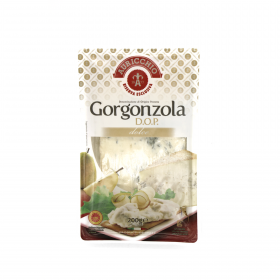

Gorgonzola dolce cheese
Weight: 200 g
Country: Italy
The cheese is produced from cow's milk with the help of enzymes and penicillium fungus: penicilli is injected into young cheese to evenly distribute the spores of the fungus, as a result of which the gorgonzola has distinctive green stripes on the cut. During the ripening of the cheese, metal rods remain in it, providing air access for the fungus activity. The term of cheese ripening is 2-4 months.
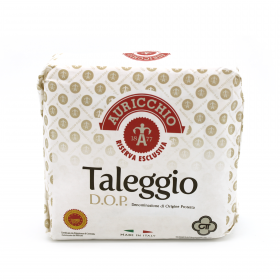

Taleggio cheese
Weight: 500 g
Country: Italy
Taleggio is italian semi-soft cheese with peel, which is named after the location of Taleggio. The cheese has a thin crust and strong aroma, and its taste is relatively tender with an unusually fruity flavor.
The cheese can be eaten grated in salads, such as radicchio or arugula (rocket, arugula), and with spices and tomatoes on bruschetta. It melts well and can be used in risotto or polenta.
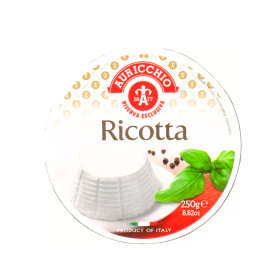

Ricotta cheese
Weight: 250 g
Country: Italy
Ricotta is a traditional Italian whey cheese. Ricotta is made from whey remaining after cooking mozzarella or other cheeses.
Ricotta is a popular component of many desserts (for which it is often ground and whipped into a soft mass): cannoli, ricotta and chocolate cakes, salty cakes, pastiera napoletana. Ricotta is also used in recipes for hot dishes (in particular, some varieties of lasagna), used to bake Pastier’s traditional Easter bread.
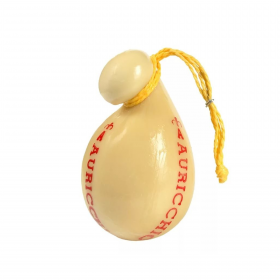

Caciocavallo cheese
Weight: slicing from 100 g
Country: Italy
Caciocavallo has the appearance of a drop of tears in a hard edible skin and tastes like Italian provolone cheese: it is soft and sweet. During its preparation, the cheese clot is stretched until it stops tearing and becomes fibrous. Already then it is portioned and molded.
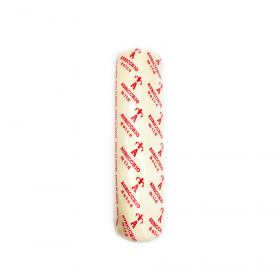

Provolone dolce cheese
Weight: 200 g / slicing from 100 g
Country: Italy
Provolone is a hard low-fat Italian cheese made from cow's milk. The production technology is initially similar to the production of mozzarella: milk is rolled up with special enzymes (usually milk is rolled by rennet enzyme obtained from calico or lamb rennet), and then heated to 80-90 ° C. The resulting cheese mass is pulled to obtain an elastic clot. After that, the salting of the cheese in the baths with sea water. After the end of this procedure, the cheese is washed and being tied with twine (whence the characteristic constriction), is suspended for drying and maturation.
It is recommended for use as an aperitif or as a dessert.


Grana Padano cheese
Weight: 150 g / slicing from 100 g
Country: Italy
It has a salty, spicy taste with a slight nutty tint. To produce 1 kg of cheese requires 17 liters of milk. Grana padano cheese ripens slowly, up to 18 months. Grana padano is available all year round, so its quality can vary slightly depending on the period of the bookmark.
Grana padano is used both separately, as a supplement to vermouth, wine, usually red, and in a grated form similarly to Parmesan (for filling pasta, in salads, etc.).
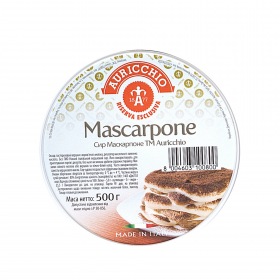

Mascarpone cheese
Weight: 500 g
Country: Italy
Mascarpone is an italian cream cheese. Mascarpone contains about 75% fat in the dry residue, has a creamy consistency, therefore it is ideal for desserts. The most famous dessert prepared on the basis of mascarpone is tiramisu. Also sometimes the cheese is used instead of butter for sandwiches.
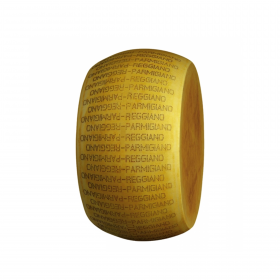

Parmigiano Reggiano cheese
Weight: 150 g / 300 g / slicing from 100 g
Country: Italy
Italian variety of hard cheese of long maturity. The texture is fragile, the cheese with an uneven cut, crumbles when cut. The taste is delicate, with a piquant aftertaste. Parmigiano is used as a separate dish or is used in the form of additives to pasta, pizza, soups and salads, it is also eaten with balsamic vinegar.


Pecorino Toscano cheese
Weight: 300 g
Country: Italy
Pecorino Toscano (Tuscan pecorino) is a firm-textured ewe’s milk cheese produced in Tuscany. Since 1996 it has enjoyed protected designation of origin (PDO) status.The cheese is prepared with full cream, pasteurised ewe's milk, often by farm-based cheese producers.
The cheese is ready to be eaten after a maturation period of just twenty days. However, it is generally regarded as a hard cheese, frequently used for grating, and to achieve this characteristic hard texture, the cheese should be left alone for at least four months.
There is a wide range of uses for the cheese, which varies according to local traditions and the season. The delicate flavour of a young pecorino Toscano can provide an excellent complement to salad-based starters. As the cheese matures and the flavour strengthens, it can be eaten with honey or jam, as well as with fresh vegetables or fruits (especially pears and figs). Well matured pecorino Toscano is widely used across Italy as an alternative to parmesan for grating over a wide range of dishes, especially pastas or soups.
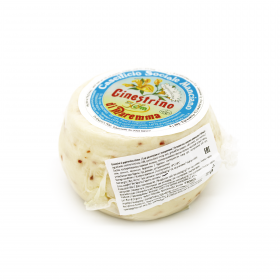

Pecorino Ginestrino cheese with peperoncino
Weight: slicing from 100 g
Country: Italy
This mixed cheese made from cow’s milk and sheep’s milk, has a slightly grainy white paste. Add crushed red pepper to it to give it even more oomph, if you’re someone who enjoya spicier flavors.


Pecorino Caciotta al tartufo cheese
This mixed soft paste cheese, made from cow’s and sheep’s milk, is known for having a high percentage of truffle, which gives it a unique flavor. It ‘s very good as a starter and for the preparation of hot toast, whose heat brings out the most of the precious tuber perfume.


Pecorino Briaco cheese
Weight: slicing from 100 g
Country: Italy
The cheese is made from cow's milk. In the production process, the heads of young cheese are immersed in grape cake, which remains in the production of wine, and then transferred to the ripening chambers. Thus, this unusual method of ripening gave the cheese a specific combination of spicy and fruit flavors - a real pleasure for gourmets.
The cheese is used in the preparation of pasta and polenta, as well as a snack for light red wines.
